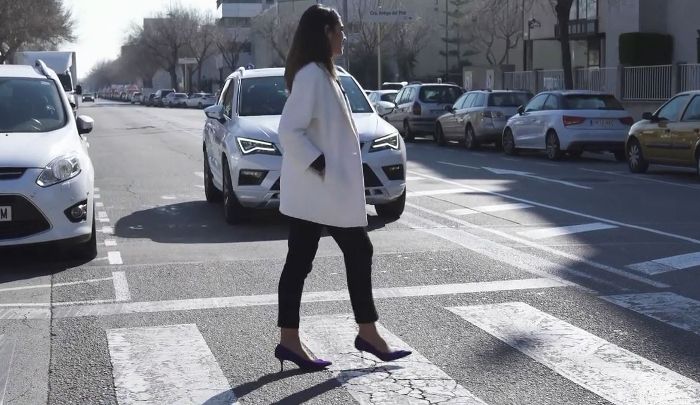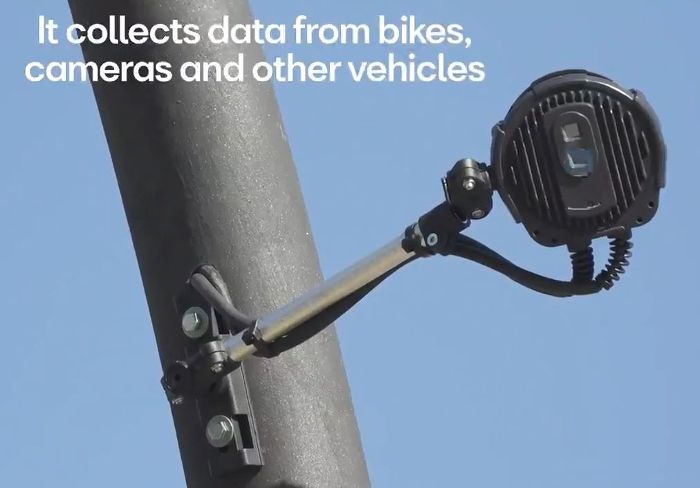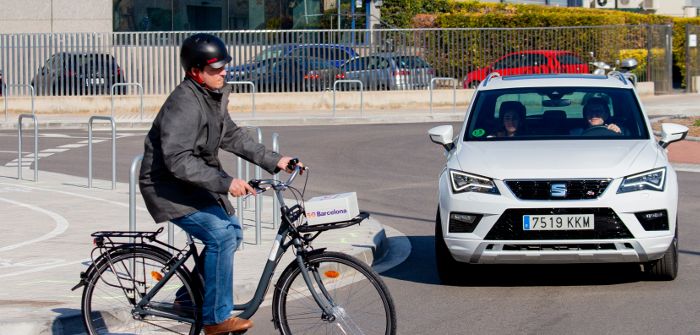A multi-partner project led by Spanish telecommunications company Telefonica and the automaker SEAT has been demonstrating 5G cellular vehicle-to-everything (C-V2X) safety systems at the Mobile World Congress in Barcelona.
The demonstrations have been taking place on the streets of Barcelona’s L’Hospitalet de Llobregat district, and have shown several connected car and 5G-assisted driving use cases in a real-world environment.
As well as Telefónica and SEAT, the trials have also involved: the Mobile World Capital Barcelona initiative, automotive systems supplier Ficosa, smart city technology developer ETRA, and the i2CAT Internet Research Center, with the collaboration of CTTC (Catalonia Telecommunications Technology Center) and UPC (Catalonia Polytechnic University).
 Ericsson and Qualcomm Technologies Inc. also participated, by equipping both vehicles and their surrounding infrastructure elements with the technology that enables them to exchange information between each other, with the main aim of increasing road safety. The project is framed within the 5G Barcelona initiative, which is aimed at consolidating the city as a reference 5G hub in Europe.
Ericsson and Qualcomm Technologies Inc. also participated, by equipping both vehicles and their surrounding infrastructure elements with the technology that enables them to exchange information between each other, with the main aim of increasing road safety. The project is framed within the 5G Barcelona initiative, which is aimed at consolidating the city as a reference 5G hub in Europe.
The C-V2X technology offers assisted driving by allowing the vehicle to communicate with all the elements around it, including other cars, traffic lights and signals, pedestrians, cyclists and motorcycles. For the project:
- SEAT contributed with two vehicles, Ateca and Arona models, equipped with the latest technology in connectivity and instrument panels that issue warnings to the driver;
- Telefónica provides the end-to-end connectivity and is opening-up its network so third parties can deploy applications at the edge of the network, such as traffic management;
- Ficosa has developed and produced the in-car C-V2X platform, which offers two types of communications – traditional via mobile network, and direct, point-to-point connectivity;
- i2CAT is in charge of the development of the ultra-precise location solution for bicycles;
- ETRA is the supplier of the road infrastructure that provided connectivity with the traffic light system;
- Mobile World Capital Barcelona, representing 5G Barcelona, is the global supervisor of the project, also offering management support.
Three 5G-assisted driving use cases have been presented:
- Detection of a pedestrian at a zebra crossing– traffic lights detect the presence of pedestrians at zebra crossings through a thermal camera and, via Ericsson’s Edge Computing, notify the cars, which display an alert on their control panel;
- Detection of cyclists when turning right – a connected bicycle equipped with a precise geolocation solution using roadside ultra-wideband beacons via Edge Computing, communicates with cars around it and reports their location. In the event of a possible collision, cars will display a warning in the control panel;
- Detection of a non-moving car on the road with low visibility – the stationary car activates emergency lights and automatically notifies other approaching vehicles with a message in the control panel, performed through a direct communication interface.
In addition to these safety use cases, this was also the world’s first use case of 5G in-car entertainment, including the download of 4K content through 5G. For the demo, the car was equipped with Qualcomm’s new 5G chipset, which, together with the video storage at Ericsson’s Edge Computing server, allows the streaming of 4K content.






